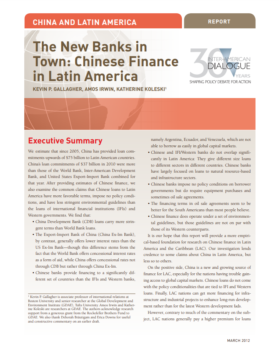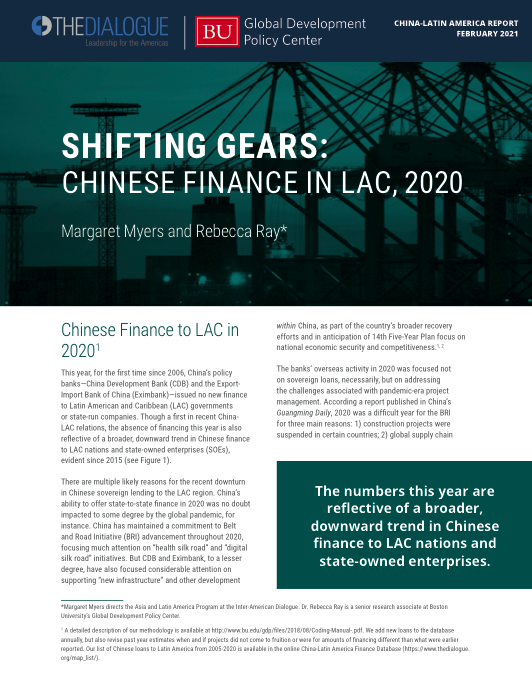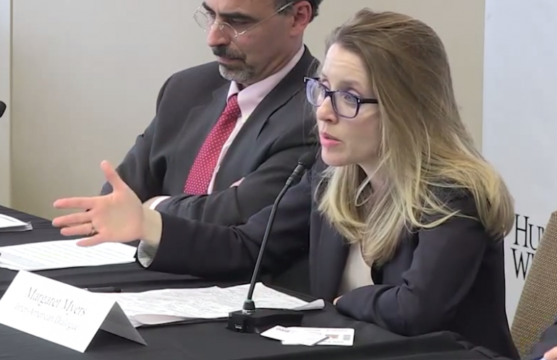
The New Banks in Town: Chinese Finance in Latin America
Estimates of the volume, composition, and characteristics of Chinese lending to the region since 2005.
This year, for the first time since 2006, China’s policy banks—China Development Bank (CDB) and the Export-Import Bank of China (Eximbank)—issued no new finance to Latin American and Caribbean (LAC) governments or state-run companies, according to findings from the Inter-American Dialogue's Asia and Latin America Program and the Global China Initiative at Boston University’s Global Development Policy Center (GDP).
Our newly-published report, Shifting Gears: Chinese Finance in LAC, 2020, considers the reasons for this drop while also documenting other sources of Chinese finance to the region. See the newly-updated Dialogue-GDP China-Latin America Finance Database for information on Chinese sovereign loans to LAC since 2005.
China’s record of sovereign lending to the region no longer surpasses that of other major development banks. China has issued over $136 billion in credit to the region since 2005, according to Global Development Policy Center and Inter-American Dialogue estimates. But as of 2019, sovereign lending to LAC from the World Bank and the Inter-American Development Bank (IDB) exceeded China’s record over the same period.
The combined effect of Chinese policy bank activity, co-financing initiatives, commercial bank finance, and other forms of lending will ensure a sizable Chinese financial presence in the region for years to come, potentially in a wider variety of projects. China’s three regional funds—the China-LAC Industrial Cooperation Investment Fund (CLAI Fund), China-LAC Cooperation Fund (CLAC Fund), and Special Loan Program for China-Latin America Infrastructure—have backed a growing number of LAC projects in recent years, including amid the pandemic.
Estimates of the volume, composition, and characteristics of Chinese lending to the region since 2005.
How will increasing Asian investment in Latin America influence economics and politics in the region?
China’s economic footprint in the region is expanding at a rapid pace. Can Latin American societies keep up?

 Video
Video
 Video
Video